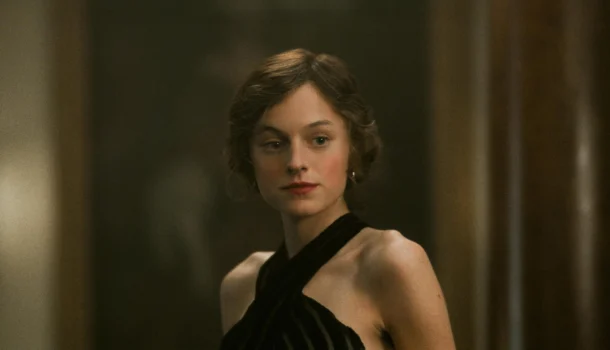It takes more than bodies for a true encounter between lovers to occur: it requires the rare alchemy of minds that choose each other amidst the world’s chaos. “Lady Chatterley’s Lover” proposes one of those unlikely fusions — not between equals, but between beings who carry within themselves moral labyrinths, half-healed wounds, and impulses not always recognized as legitimate. Lawrence’s novel, in this version directed by Laure de Clermont-Tonnerre, doesn’t treat love as the familiar trope of romantic fulfillment, but as a radical attempt at subjective reconstruction. Love, when it refuses to yield to social or biological expectations, becomes one of the most complex intellectual journeys — an exercise in perceiving the other that demands attentiveness, emotional discipline, and a certain disregard for the consoling narratives of instant happiness.
In this sense, to love — with the completeness demanded by the plot — is not the opposite of fear, but rather an elaborate way of confronting the deepest aspects of our own inadequacy. Constance and Mellors are not characters who harmonize effortlessly; quite the contrary, they are twisted beings who clash, annoy, enchant each other, and gradually build the possibility of something close to communion. Yet this possibility doesn’t arise from the youthful illusion that love is enough, but from the adult decision to nurture a relationship even when hope seems dehydrated. It’s in the acceptance of the imperfect, of the unresolved, that the film’s emotional strength resides — and perhaps its most unsettling truth: happiness isn’t the climax of a well-led narrative, but the byproduct of two people who refuse to give up on what still beats, even when everything seems to collapse.
But if love is this fragile architecture built upon emotional ruins, there is a corrosive element that threatens its structure: silent resentment. The film simultaneously reveals how hatred can mimic love, disguising itself as protection, care, or respect. Clifford, Constance’s wounded husband, represents this perverse logic. His physical impotence functions as a metaphor for a hardened masculinity, incapable of conceiving that affection is only genuine when it’s free. The narrative draws a dark arc by showing how institutionalized and socially sanctioned sexual repression operates as a destructive force. At this point, Clermont-Tonnerre’s direction succeeds in not aestheticizing pain, but exposing it with necessary rawness: love isn’t just a gift, but a risk that must be embraced with all its possible failures.
In the end, there is no easy catharsis. Mellors and Constance are apart, living new beginnings marked more by scars than promises. Benoît Delhomme’s earthy and aqueous cinematography doesn’t seek to idealize but to challenge the gaze: the naked bodies in the forest aren’t celebrations of eroticism, but declarations of vulnerability. It’s as if the film is telling us that true freedom lies in what escapes conventions: a rain-soaked bath between lovers, a silent exchange of glances, the sweet weight of absence. In those moments, what we call happiness isn’t a state to be achieved, but a fleeting instant that imposes itself when we abandon the need for control.
David Magee’s screenplay, though elliptical, preserves Lawrence’s central concerns without domesticating Constance’s complexity. Contrary to what rushed interpretations might suggest, she is not a passive figure who gives herself to the gardener out of hunger for adventure. She already knew desire, had already experienced passion. What seduces her in Mellors is not just physical vigor, but the tenderness of someone who understands the silence of trees and reads James Joyce without making a performance out of it. Her attraction to the “gardener” is, at its core, a rejection of the artificiality of a world that has replaced sincere touch with hollow etiquette.
In this version, Constance’s transgression lies not just in adultery, but in her rupture with a power structure that reduced her to an ornament. By falling in love with Mellors, she subverts more than moral rules: she breaks a pact of obedience that upheld an entire social order. Thus, the film rises as more than a love story — it becomes a quiet manifesto for authenticity, a subtle cry against the domestication of feelings. The director doesn’t merely adapt; she displaces, updates, and intensifies — giving Lawrence new vitality without diluting his irreverence.
What remains, in the end, is not a tale of victorious love, but an honest portrait of what we are capable of sacrificing — and preserving — when we choose to love. In times of disposable affections and fragile bonds, “Lady Chatterley’s Lover” forces us to confront an uncomfortable question: how much intensity can we bear in a love that demands we step aside so the other can also exist?
Film: Lady Chatterley’s Lover
Director: Laure de Clermont-Tonnerre
Year: 2022
Genres: Romance/Drama
Rating: 9/10

